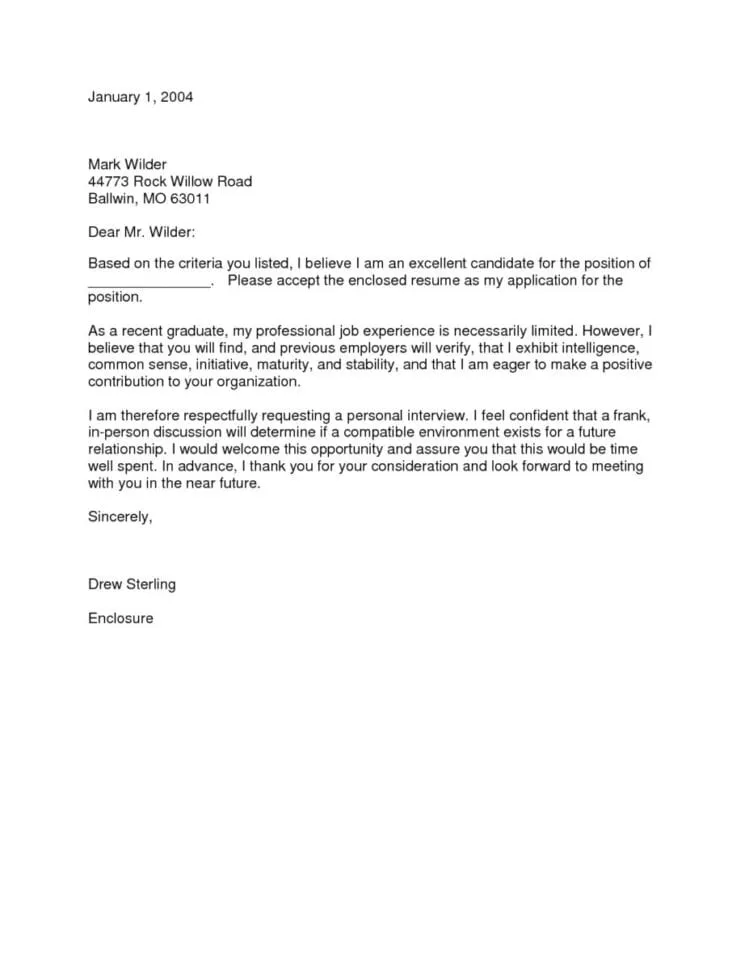Cover Letter for High School Students
Navigating the job market as a high school student can be daunting. One of the most crucial tools in your arsenal is a well-crafted cover letter. A cover letter is more than just a formality; it’s your chance to make a strong first impression, demonstrate your personality, and showcase why you’re the ideal candidate for the position. This guide will provide you with cover letter examples tailored for high school students, offering insights and tips to help you create compelling letters that grab attention and increase your chances of landing that job, volunteer position, or internship. Whether you’re seeking a part-time role, a volunteer opportunity, or an internship, this guide is designed to equip you with the knowledge and examples you need to succeed.
Understanding the Purpose of a Cover Letter
A cover letter serves as your personal introduction to a potential employer. It accompanies your resume and provides context, expanding on the information presented in your resume. The primary goal is to convince the hiring manager that you’re a good fit for the role and to encourage them to read your resume. Unlike a resume, which is a factual summary of your skills and experience, a cover letter allows you to express your enthusiasm, personality, and specific reasons for applying. It’s your opportunity to explain how your skills and experiences align with the job requirements and why you’re excited about the opportunity.
Why a Cover Letter Matters for High Schoolers
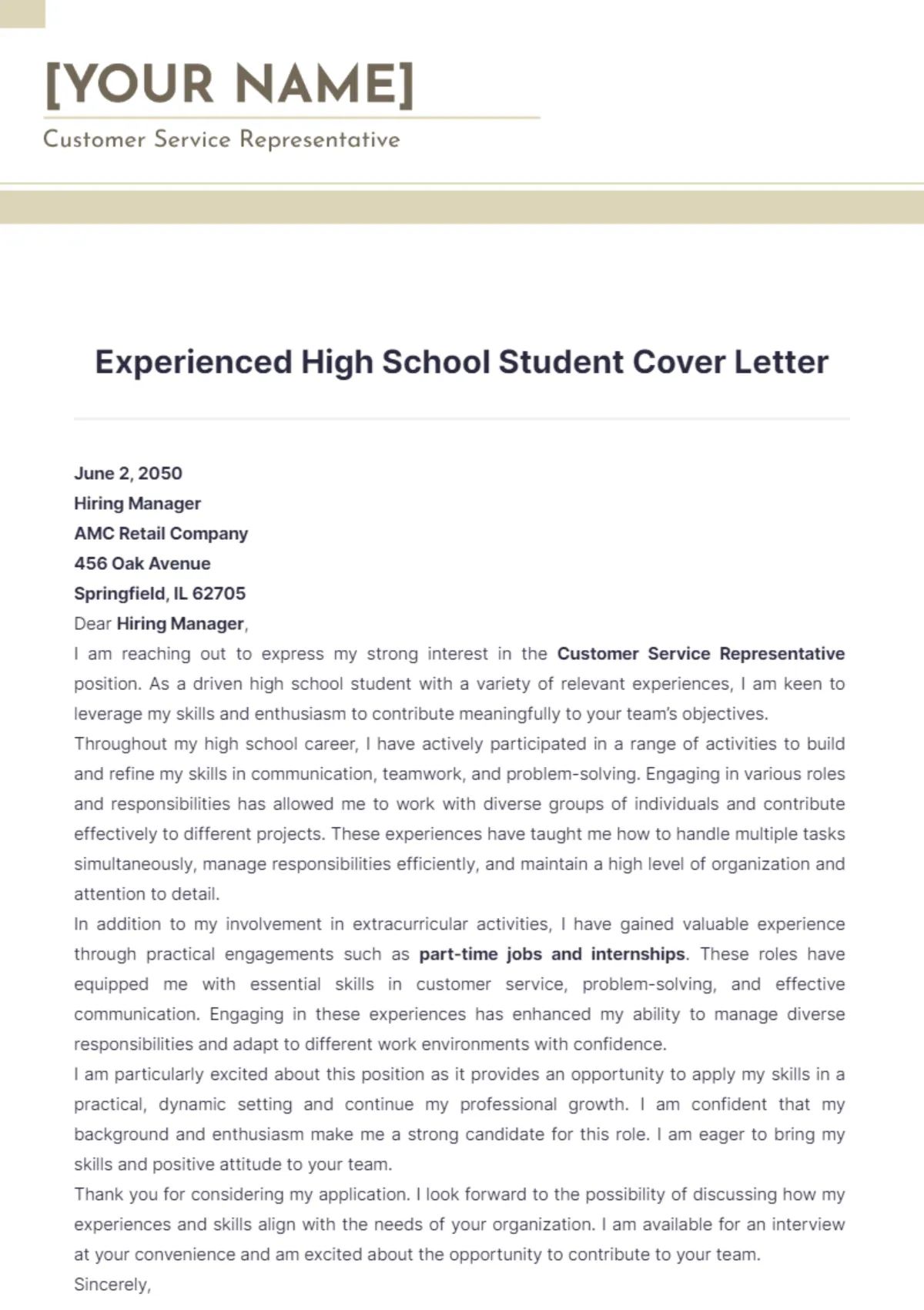
As a high school student, your work experience might be limited. A cover letter becomes even more critical because it allows you to highlight transferable skills, such as teamwork, communication, and problem-solving, gained through extracurricular activities, volunteer work, or even school projects. A well-written cover letter can demonstrate your professionalism, attention to detail, and genuine interest in the position, setting you apart from other applicants. It’s also a chance to address any gaps in your resume, such as a lack of direct work experience, by explaining how your skills and qualities make you a valuable candidate. The cover letter is your advocate, making the case for why you should be considered for the role.
Key Components of a High School Cover Letter
A strong cover letter follows a standard format, ensuring clarity and professionalism. Each component plays a vital role in conveying your message effectively. The following are the essential elements you should include in your cover letter, ensuring that your application stands out positively. These components provide structure and help you communicate your qualifications and enthusiasm in a clear and concise manner, making it easier for the employer to understand why you are a great fit for the role. By including these key elements, you demonstrate your professionalism and attention to detail.
Contact Information
Your Name and Address
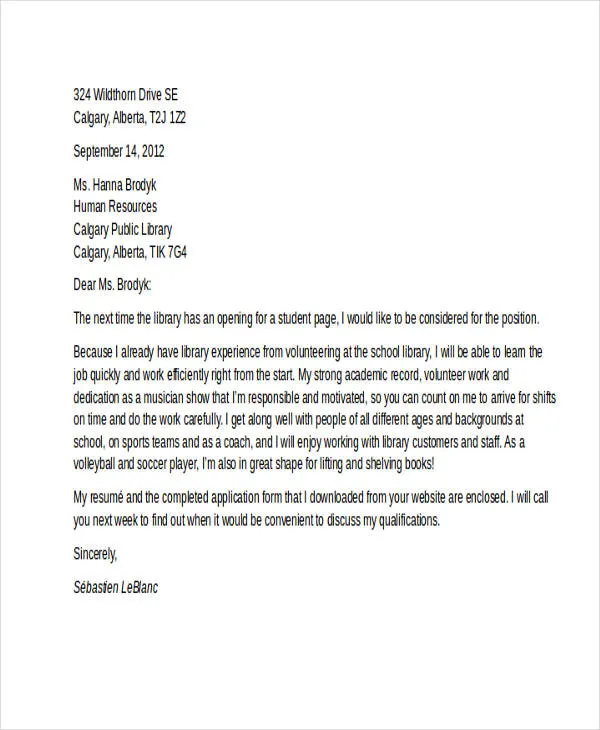
Start with your full name, address, phone number, and email address. Ensure your email address is professional. Avoid using nicknames or informal email addresses. This information should be placed at the top left or right corner of your cover letter.
Date
Include the date you are sending the cover letter. This is typically placed beneath your contact information, aligned to the left or right.
Employer’s Information
Add the name of the hiring manager (if known), their title, the company name, and the company’s address. This information should be placed below the date, usually on the left side.
The Salutation
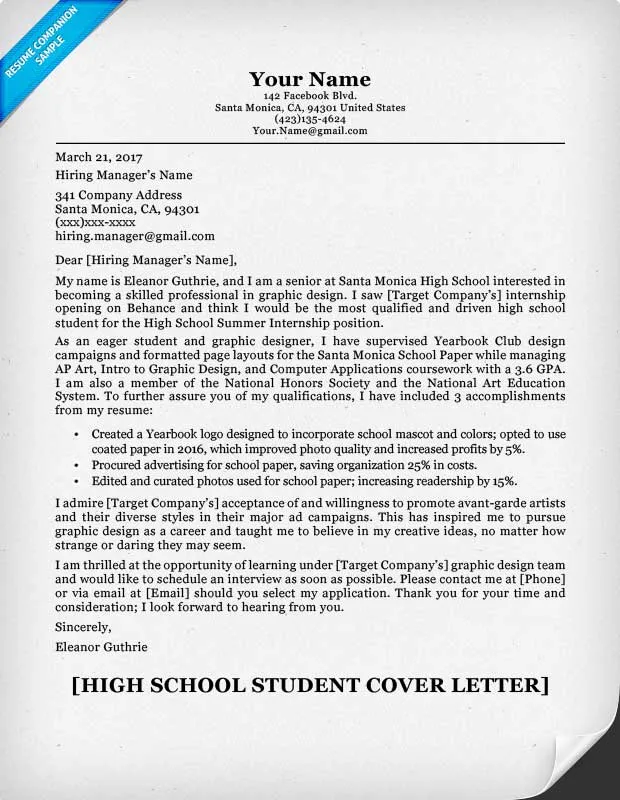
Use a professional salutation. If you know the hiring manager’s name, use “Dear Mr./Ms./Mx. [Last Name].” If you don’t know the name, use “Dear Hiring Manager” or “Dear [Company Name] Team.” Avoid generic greetings like “To Whom It May Concern.”
Writing the Body of Your Cover Letter
The body of your cover letter is where you make your case. It’s crucial to structure your letter logically and use language that is both professional and engaging. The body typically consists of an introduction, several paragraphs highlighting your skills and experiences, and a closing paragraph. Each section plays a critical role in conveying your message effectively and persuading the employer to consider your application. Ensure your writing is clear, concise, and tailored to the specific job requirements.
The Introduction Paragraph
Start with a strong introduction that grabs the reader’s attention. State the position you are applying for and how you learned about the opportunity. Briefly mention why you are interested in the role and the company. This opening paragraph sets the tone for the rest of your letter and encourages the reader to continue reading. Express your enthusiasm for the position and mention your key qualifications that align with the job’s requirements. This initial statement should be concise and compelling, capturing the employer’s interest immediately. A strong introduction is crucial to making a positive first impression.
Highlighting Relevant Skills and Experiences
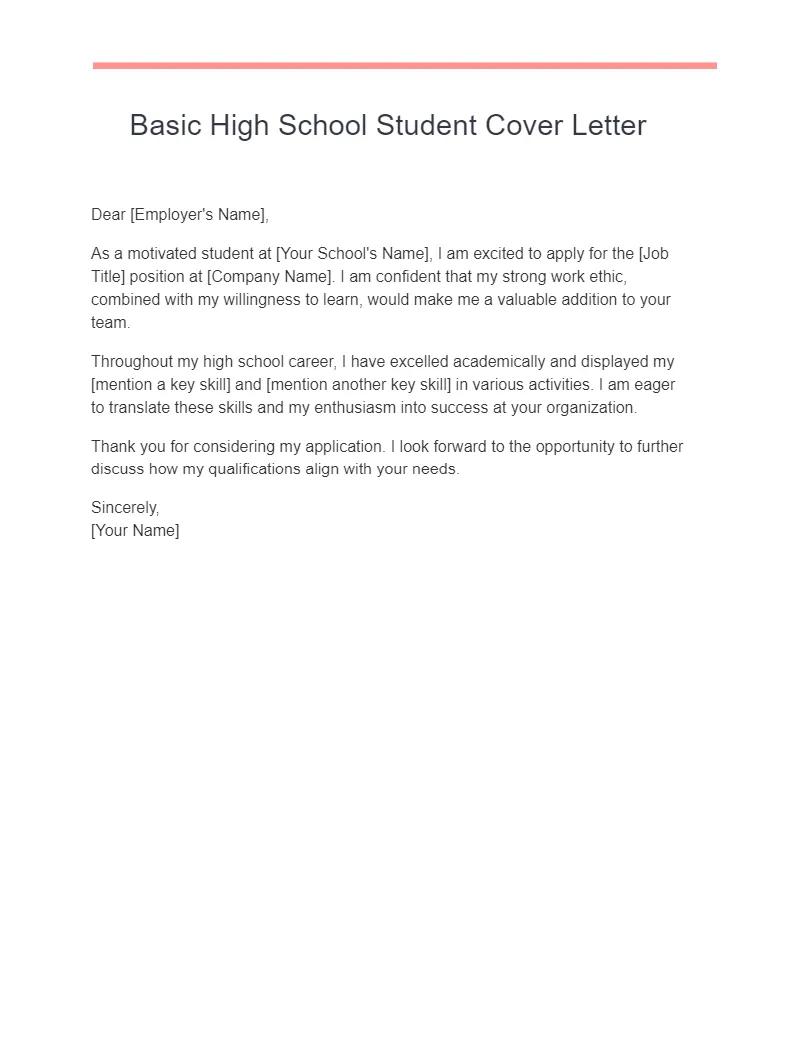
In the body paragraphs, highlight your skills and experiences that are relevant to the job. Even if you lack extensive work experience, you can draw on experiences from school, extracurricular activities, volunteer work, or personal projects. Use specific examples to illustrate your skills. For instance, if the job requires teamwork, describe a situation where you successfully worked with a team to achieve a goal. Quantify your achievements whenever possible. Use action verbs to describe your responsibilities and accomplishments, and tailor your examples to match the job description.
Tailoring Your Letter to the Specific Job
Customize your cover letter for each job you apply for. Review the job description carefully and identify the key skills and qualifications the employer is seeking. Address these directly in your letter, providing examples of how you have demonstrated these skills. This demonstrates your attention to detail and your genuine interest in the specific position. Avoid using a generic cover letter; instead, personalize it to show that you understand the company’s needs and the role’s requirements. This personalization shows that you have invested time and effort in your application, making you a more attractive candidate.
The Closing Paragraph
In the closing paragraph, summarize your interest in the position and reiterate your qualifications. Thank the employer for their time and consideration. Express your enthusiasm for an interview and provide your contact information again. End with a professional closing, such as “Sincerely” or “Respectfully,” followed by your full name. This final paragraph should reinforce your desire for the job and leave a positive lasting impression on the employer. Make sure your closing paragraph is concise and expresses gratitude.
The Closing
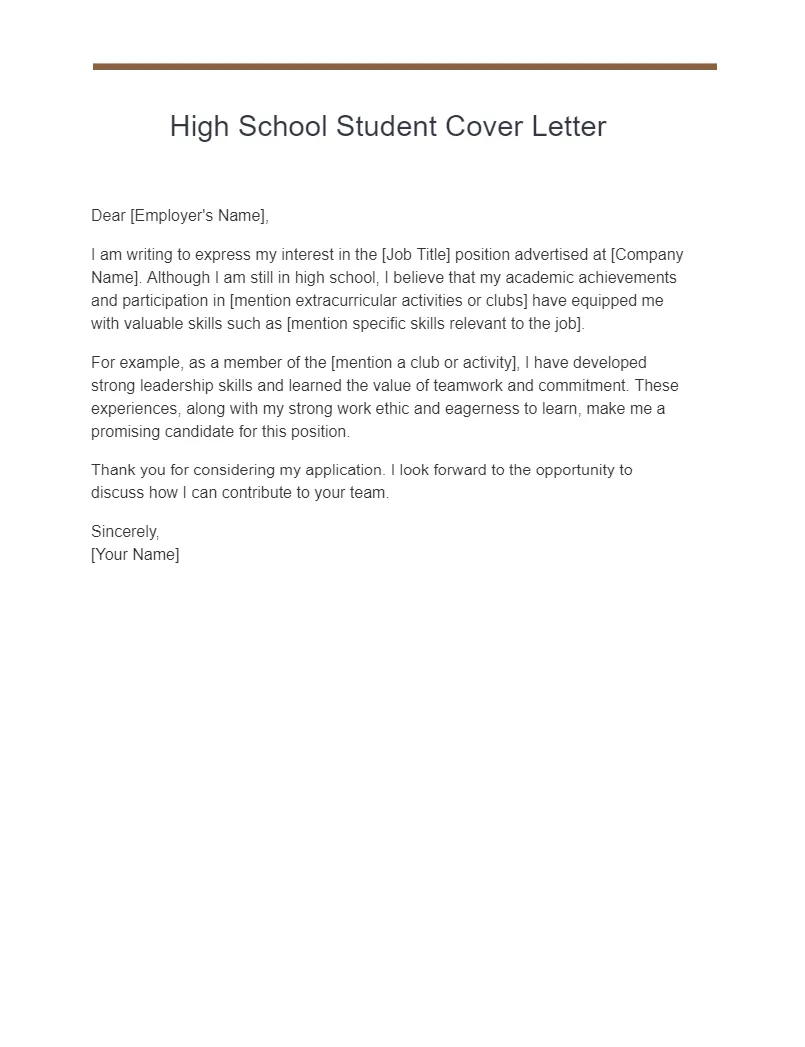
Use a professional closing, such as “Sincerely,” “Respectfully,” or “Thank you.” Always type your full name below the closing. Ensure your closing is consistent with the overall tone of your letter and reflects your professionalism. This final element completes your cover letter and leaves the employer with a positive impression. A thoughtful closing demonstrates your respect for the opportunity and your attention to detail.
Common Cover Letter Mistakes to Avoid
Avoiding common mistakes can significantly improve your cover letter’s effectiveness. Paying close attention to detail and ensuring your letter is polished and professional is essential. The following are common errors that you should avoid in your cover letter, so you can make a strong impression on the employer. These errors can undermine your application and negatively impact your chances of getting the job. By being aware of these pitfalls, you can ensure that your cover letter makes a positive impression.
Typos and Grammatical Errors
Typos and grammatical errors can immediately damage your credibility. Proofread your cover letter carefully before submitting it. Use a spell checker and grammar checker, but also read it aloud to catch any errors the software might miss. Ask a friend, teacher, or family member to proofread your letter for a second opinion. A polished, error-free cover letter demonstrates your attention to detail and professionalism.
Generic Cover Letters
Avoid using generic cover letters that could be sent to any employer. Tailor each cover letter to the specific job and company. Research the company and highlight how your skills and experiences align with their needs. Demonstrate your genuine interest in the position and explain why you are a good fit. A personalized cover letter shows that you have invested time and effort in your application, making you a more attractive candidate.
Lack of Enthusiasm
Show enthusiasm for the position and the company. Express your excitement for the opportunity and your interest in contributing to the team. Use positive and engaging language throughout your cover letter. Demonstrate your understanding of the company’s mission and values. A cover letter filled with passion and genuine interest is far more likely to capture the employer’s attention and make them want to learn more about you.
Cover Letter Examples
Reviewing cover letter examples can provide valuable insights and guidance. Understanding how to structure your letter, highlight your skills, and express your interest is essential. These examples will help you craft a cover letter that stands out and increases your chances of securing the job or opportunity. You will see how to adapt these examples to your own experience and the specific requirements of the position. Customize these examples to reflect your skills, experiences, and the specific requirements of the job.
Example 1: Part-time Job
This example is for a part-time job at a retail store. It highlights customer service skills, teamwork, and reliability. Use this example as a model for demonstrating the skills and qualities needed for part-time positions. Tailor the example to fit your specific experiences and the job requirements. Be sure to emphasize your ability to handle customer interactions, work as part of a team, and be responsible for fulfilling the job duties.
Example 2: Volunteer Position
This example is for a volunteer position at a local non-profit. It highlights compassion, communication skills, and a commitment to community service. Use this example when applying for volunteer roles, adapting it to fit your specific volunteer experiences and the organization’s mission. Focus on your ability to work with others and your dedication to the cause. This example will help you emphasize the value you bring to the volunteer position.
Example 3: Internship Application
This example is for an internship in a professional field. It highlights relevant coursework, skills, and career aspirations. Use this template to focus on the knowledge and skills you’ve gained through your education. It’s an excellent example to use when highlighting your enthusiasm for gaining hands-on experience and achieving your career goals. Adapt this example for your specific internship goals.
Proofreading and Editing Your Cover Letter
Proofreading and editing are essential steps in ensuring your cover letter is polished and professional. Thoroughly review your letter for any errors in grammar, spelling, punctuation, and formatting. Read the letter aloud to catch any awkward phrasing or sentences. Ask a friend, family member, or teacher to review your cover letter for feedback. A well-edited cover letter demonstrates your attention to detail and commitment to presenting yourself in the best possible light, significantly increasing your chances of a positive outcome.
